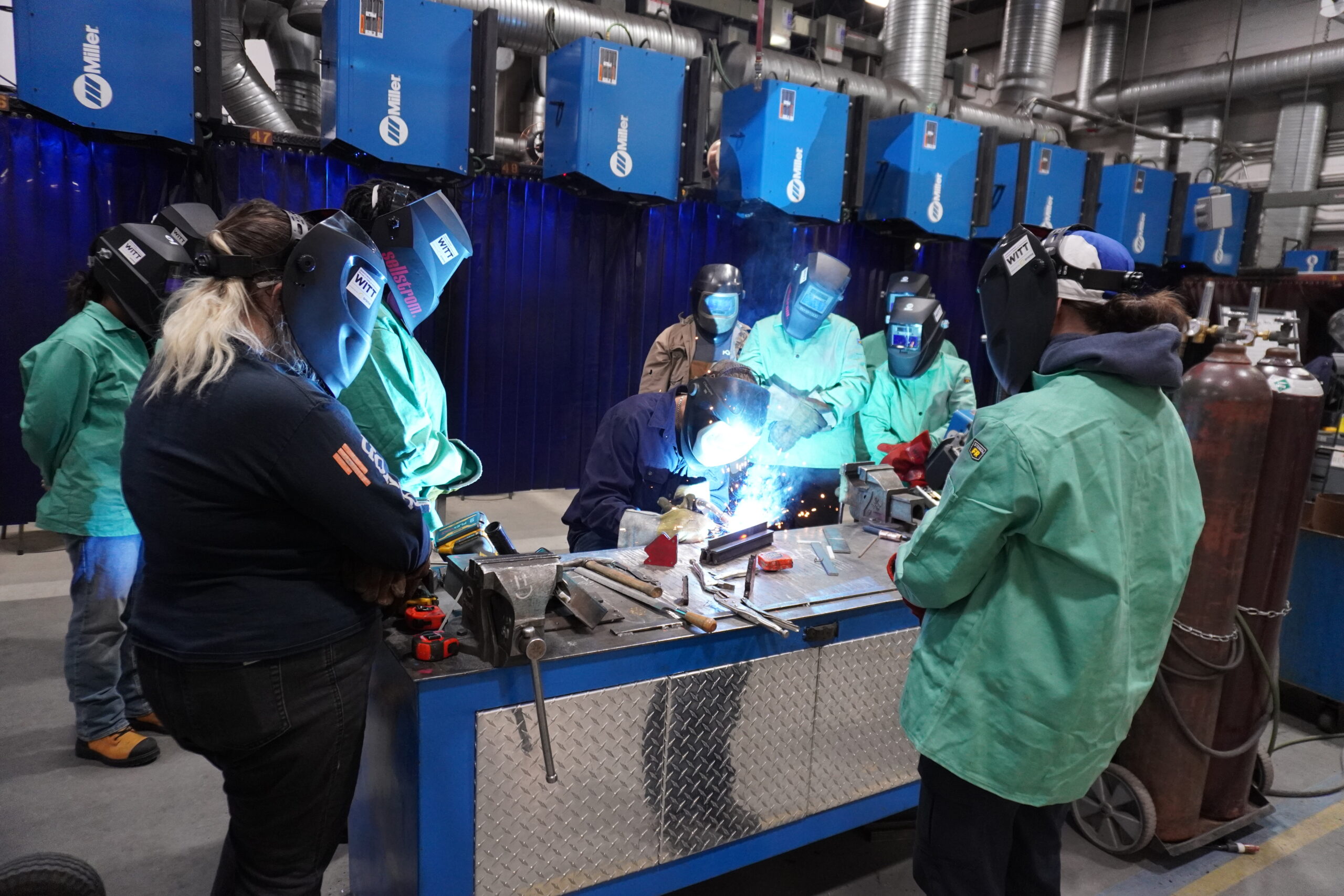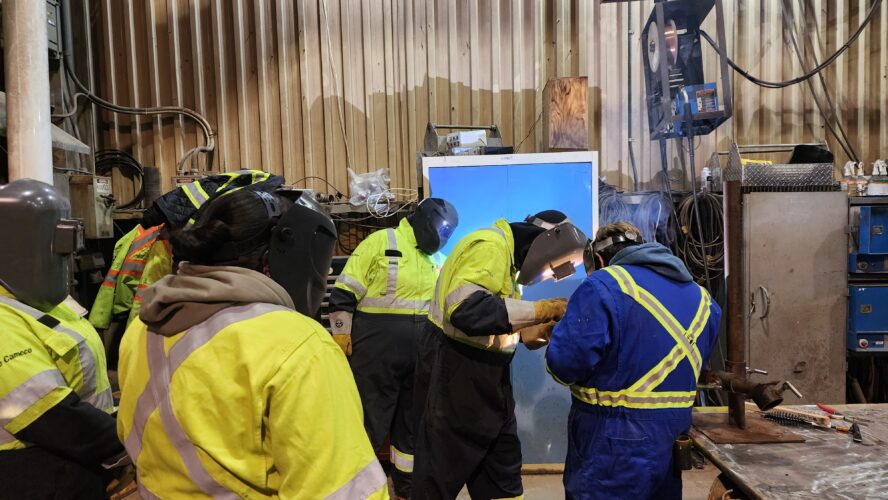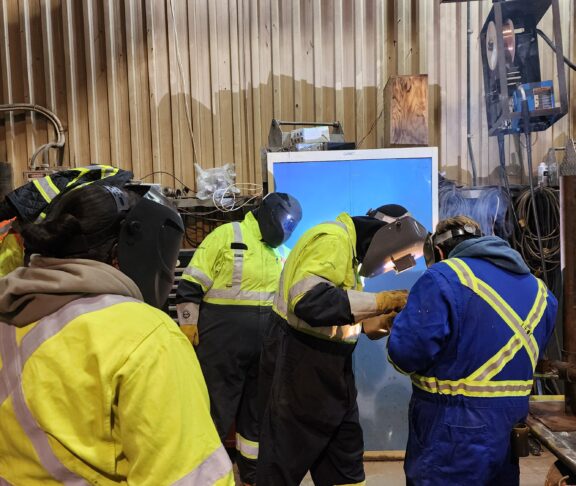Apprenticeship is considered the gold standard for entering the skilled trades. But as Canada faces rising demand for welders and related professionals, the question isn’t whether apprenticeship is valuable. The question is whether it’s accessible enough, and whether alternative pathways to the workforce should be given more attention.
According to a recent report from the CWB Group, apprenticeship registrations have rebounded post-pandemic, rising 141.7 per cent from 1,653 in 2020 to 3,996 in 2023. However, completion rates remain low, averaging just 44 per cent between 2016 and 2022 (excluding 2020), and labour shortages are now on the horizon. There are several barriers to completion, including financial pressure to work full-time, limited access to technical training, and a lack of employer support or mentorship. In some cases, apprentices may leave before completion due to life circumstances, unclear pathways, or the perception that a credential isn’t necessary to succeed in the field.
These challenges highlight the importance of expanding and supporting alternative pathways into the welding workforce that offer more flexible, accessible, and inclusive entry points for new talent. These programs often provide a stepping stone into full-time work or serve as a launchpad into an apprenticeship later on.
Recognizing and investing in these alternative routes can allow more people to bring their skills, determination, and lived experience into the trades.
One path doesn’t fit all
Apprenticeship typically requires an individual to have an employer sponsor, the ability to work full-time while learning, and access to training institutions. But for many Canadians, those pieces don’t fall into place easily. In rural or remote areas, employer sponsors can be hard to find. Some people can’t afford to work unpaid or irregular hours. Others simply don’t see themselves reflected in the trades due to systemic barriers or lack of exposure.
That’s where pre-employment and skills training programs come in. Offered by community colleges, Indigenous organizations, workforce development agencies, unions, and not-for-profit organizations, these programs equip participants with hands-on technical training, safety certifications, employability skills, and career readiness. Some even offer wraparound supports like childcare, transportation assistance, or language learning.
Meet Heidi: From curiosity to a career in welding
Heidi Allen never imagined herself in a welding shop. However, when a high school instructor signed her up for a 30-hour Women of SteelTM welding camp hosted by the CWB Foundation and UA Canada, she discovered not only a new skill but also a viable career path.
“The first time I picked up the torch, I felt powerful,” Heidi says. “I realized I could build something real with my own hands.”
What Heidi didn’t know at the time was that she was in the beginning stages of working her way through the Sparking Success initiative, a collaborative effort between the CWB Foundation, Bruce Power, UA Canada, Bluewater District School Board, and the Bruce-Grey Catholic School Board.

The Sparking Success initiative provided Heidi with hands-on training, industry exposure, and mentorship, designed to help women break into the skilled trades through programs like Women of Steel. Her confidence grew in tandem with her skills, and after graduating, she became an apprentice and the youngest member to join UA Local 527 in Ontario, Canada.
“Walking into an apprenticeship out of high school was one of the best things to happen to me,” she admits. “I didn’t know what an apprenticeship looked like back then, but I knew it would allow me to learn welding right away and jumpstart my career.”
Since then, Heidi has competed in the 2023 Skills Ontario competition and works in a high-tech, safety-focused environment at Bruce Power. “I’m doing work that matters. Work that contributes to clean energy and national infrastructure. It’s more than I ever thought possible.”
Heidi’s journey from welding newcomer to skilled welding professional shows how inclusive, community-driven skilled trades programs can change lives. She’s a shining example of the impact training initiatives and innovative partnerships can have on youth and industries that rely on highly skilled trades such as welding and materials joining.
Making room for alternative pathways
Stories like Heidi’s are far more common than many employers realize. Pre-employment programs shouldn’t be dismissed as fallback options. They’re effective yet often overlooked on-ramps that prepare individuals for success in the trades. Those who participate typically bring valuable real-world experience, resilience, and motivation to their learning.
The CWB Group report notes that a more inclusive approach to education and training is critical to meeting future labour needs. By broadening the definition of how someone becomes a welder, the industry can tap into a much wider and more diverse pool of potential talent, including:
- Mid-career changers looking for stable, meaningful work.
- Newcomers who bring prior technical knowledge but need local certification and experience.
- Youth who didn’t have trades programming in high school but are eager to learn hands-on.
- Women and equity-deserving groups who may not see themselves reflected in traditional trades marketing.
These groups bring different strengths, but they often share a common need: a starting point that builds confidence, skills, and a sense of belonging in the trades.
What employers can do to support alternative pathways
Employers and industry leaders can make a significant impact by supporting and integrating these programs into their workforce strategies. Here’s how:
Recognize pre-employment training as a valid entry point: Program participants have foundational skills and are often highly motivated. Give them a chance to prove themselves.
Create bridge roles or on-the-job training programs: Entry-level roles that offer structured learning can help new hires transition smoothly into a formal apprenticeship.
Partner with local training organizations: Provide input on curriculum, offer site tours, or volunteer as a guest speaker. These connections shape programs to meet real-world needs.
Sponsor or mentor graduates: Some workers just need a foot in the door and a bit of guidance. Mentorship increases retention and strengthens your talent pipeline.
Celebrate accessibility for everyone: Show that your workplace values people from all backgrounds and experiences.

More pathways build a stronger workforce
Traditional pathways are tried and tested, but focusing only on apprenticeships means potentially missing out on individuals who have much to contribute. With growing demand, shifting demographics, and an urgent need for more qualified workers, it’s time to expand the perception of what the talent pipeline can look like.
By supporting pre-employment programs, partnering with community-led initiatives, and making space for alternative routes into the trade, employers and industry leaders can create a more inclusive, agile, and sustainable workforce.
Download the Welding Post-secondary Education and Apprenticeship Snapshot report.
Learn more at cwbweldingfoundation.org.
The CWB Group is a leading industry-supported organization providing welding certification, management systems registration, and training services to more than 10,000 companies in over 60 countries. Headquartered in Ontario, Canada, with offices nationwide and abroad, CWB is recognized as one of the world’s largest and most innovative welding and materials joining organizations. For more information, please visit: https://www.cwbgroup.org/
The CWB Foundation is a national charity advancing careers in welding and skilled trades. We work with partners to prepare the future workforce, promote inclusivity, and support the demand for skilled professionals that drive North America’s prosperity.


